Dunkleosteus terrelli
Dunkleosteus terrelli, an extinct species of the order Arthrodira, class Placodermi, was an apex predator in the marine environment during the Upper Devonian, probably cruising the seas of North America and Eurasia at that time 4).
Most species of the placoderms had dorsoventrally compressed body forms and poorly developed heterocercal tails so they have been interpreted as bottom-dwellers and swimmers using undulation of their bodies 3).
The total body length, previously estimated 4.5-6 metres. However, a new model based on the ecomorphological approach estimats to be up to 8.79 metres, and also predicts the caudal fin having well-developed ventral lobe, high heterocercal and hypocercal angles, narrow peduncle and wide span, suggesting Dunkleosteus terrelli was a good swimmer 4).
These characters suggest that Dunkleosteus could penetrate protective armor, such as cuticle or dermal bone, allowing this apex predator to potentially eat anything in its ecosystem, including other placoderms 1), 2).
References:
- Anderson PSL, Westneat MW (2007) Feeding mechanics and bite force modelling of the skull of Dunkleosteus terrelli, an ancient apex predator. Biol. Lett. 3:76–79. (DOI:10.1098/rsbl.2006.0569)
- Anderson PSL, Westneat MW (2009) A biomechanical model of feeding kinematics for Dunkleosteus terrelli (Arthrodira, Placodermi). [abstract] Paleobiology 35(2) :251-269. (DOI:10.1666/08011.1)
- Carr RK (2010) Paleoecology of Dunkleosteus Terrelli (Placodermi: Arthrodira) The Cleveland Museum of Natural History PALEOECOLOGY OF DUNKLEOSTEUS TERRELLI (PLACODERMI: ARTHRODIRA). Kirtlamdia ( The Cleveland Museum of Natural History). No.57:36-45.
- Ferrón HG, Pérez CM, Botella H (2017) Ecomorphological inferences in early vertebrates: reconstructing Dunkleosteus terrelli (Arthrodira, Placodermi) caudal fin from palaeoecological data. PeerJ 5:e4081. (DOI: 10.7717/peerj.4081)
- Long J, Trinajstic K, Johanson Z (2009) Devonian arthrodire embryos and the origin of internal fertilization in vertebrates. [abstract] Nature 457:1124–1127. (DOI:10.1038/nature07732)

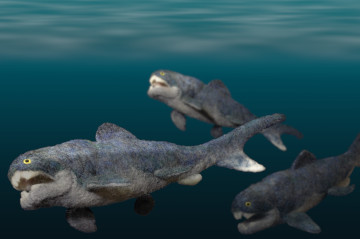
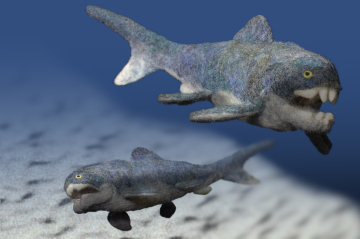
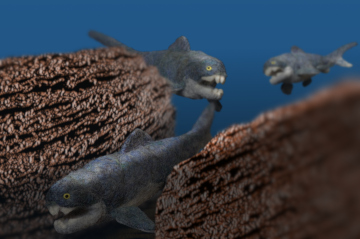
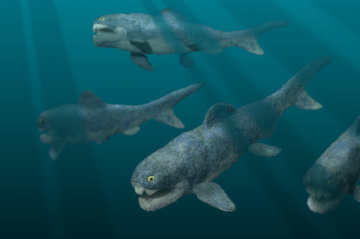
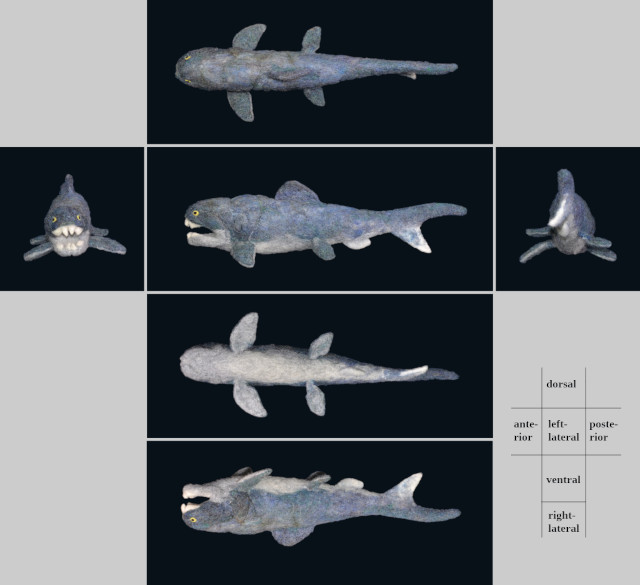
modified in March 2020.
re-modified in November 2022.